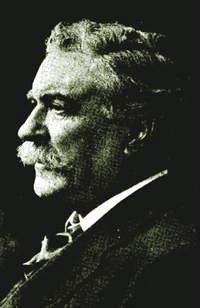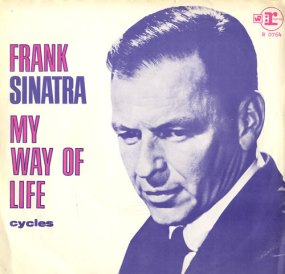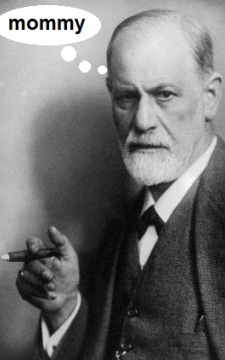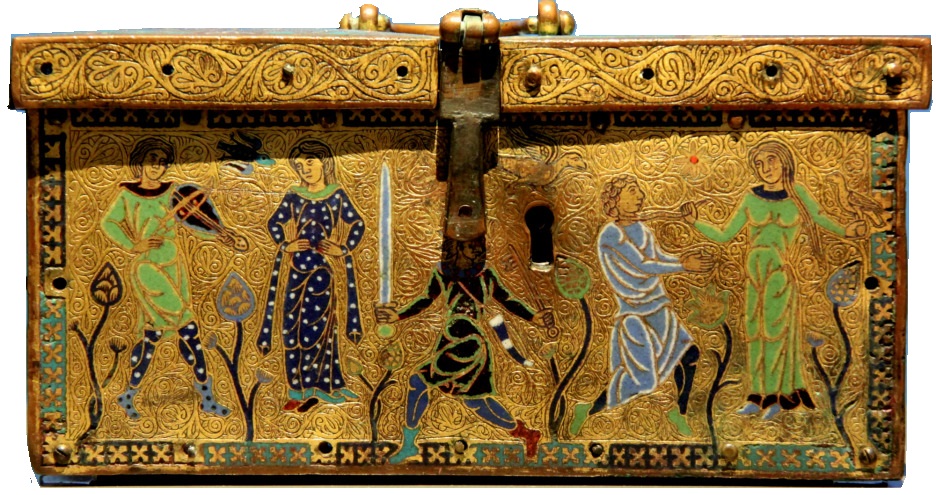Love and war have always been opposed, as we see in our usual phrase ‘make love not war’ or in the rhetoric of pro and anti-war camps. That the two are mutually exclusive is obvious enough. However, in twelfth century Europe something peculiar happened that ushered in a melding of these two contrary principles. Here the military code of chivalry was mated with the fancies of courtly love to produce a bastard child which we will here call chivalric love (today we simply label it ‘chivalry’). Prior to this time chivalry always referred to the military code of behaviour –one that varied from country to country– but one which had absolutely nothing to do with romantic love.
What method did twelfth century society use to bring this about? In a word, shaming.
The medieval aristocracy began to ramp up the practice of shaming by choosing the worst behaviours of the most unruly males and extrapolating those behaviours to the entire gender. Sound familiar? Knights were particularly singled out –much like today’s sporting heroes who display some kind of faux pas– to be used as examples of bad male behaviour requiring the remedy of sweeping cultural reform.
During this time of (supposedly) unruly males, uneducated squires were said to ride mangy horses into mess halls, and rude young men diverted eyes from psalters in the very midst of mass. Among the knights and in the atmosphere of tournaments occasional brawls with grisly incidents occurred – a cracked skull, a gouged eye – as the betting progressed and the dice flew. Male attention to clothing and fashion was said to be appalling, with men happy to go about in sheep and fox skins instead of clothes fashioned of rich and precious stuffs, in colours to better suit them in the company of ladies. And perhaps worst of all were their lack of refinement and manners toward women which was considered offensive.
How and by whom was this unruly gender going to be reformed? One of the first solutions was posed by a French Countess named Marie. According to historian Amy Kelly, with her male reforming ideas;
“Marie organized the rabble of soldiers, fighting-cocks, jousters, springers, riding masters, troubadours, Poitevin nobles and debutantes, young chatelaines, adolescent princes, and infant princesses in the great hall of Poitiers. Of this pandemonium the countess fashioned a seemly and elegant society, the fame of which spread to the world. Here was a woman’s assize to draw men from the excitements of the tilt and the hunt, from dice and games, to feminine society, an assize to outlaw boorishness and compel the tribute of adulation to female majesty.”1
Countess Marie was one among a long line of reformers to help usher in a gynocentrism whose aim was to convince men of their shared flaws –essentially to shame them- and to prescribe romantic love and concomitant worship of females as the remedy. Via this program romantic love was welded onto the military code and introduced as a way to tame men’s rowdiness and brutality, something today’s traditionalists agree with in their call for men to adhere to these same male roles established first in medieval Europe. One of today’s authorities on this period describes the training of knights in her observation, “The rise of courtly love and its intersection with chivalry in the West are both events of the twelfth century. The idea that love is ennobling and necessary for the education of a knight comes out of the lyrics of this period, but also in the romances of knighthood. Here the truest lovers are now the best knights.”2
With romantic love firmly established within the chivalric code we begin to see the romantic behaviours of soldiers so familiar to us today; going to fight and die for his Lady, love letters from the front lines, a crumpled photo of his sweetheart in a uniform pocket. Rather than for man, king and country it is his love for “her” that now drives a man’s military sacrifice. This is also the reason why today’s movies portraying warzones and carnage always include a hero and his Lady/Damsel pausing for a passionate tongue kiss while the bombs explode around them, as if to suggest that all this carnage is for the sake of her and romantic love. Once accepted into the chivalric canon various love “rules” were enforced with military might –by white knights as we call them- and the resulting culture has been unstoppable. To try and stop it brings the wrath of all those white knights who will bury your ass into the ground for breaking this new military “goal” of romantic love.
Prior to the Middle Ages romantic love was usually considered with suspicion and even viewed as a sign of mental instability requiring removal from the source of trouble and perhaps a medical solution. In the context of universally arranged marriages, romantic love, if it was indulged at all, was done so in a discreet and often underground way without the sanction of polite society. This was the situation worldwide until the advent of the European revolution.
The cult of chivalric love took root first among the aristocratic classes and soon after reached the common classes through literature and storytelling. Romance literature in particular. Having germinated initially in Germany and France in the twelfth centuries, the cult spread on the wings of a burgeoning book production industry that would bring the gynocentric revolution to the entire European continent.
When one considers the subjects in these books – Lancelot and Guinevere, Tristan and Isolde, heroic male deeds for women, love scandals, courtship, upper-class weddings, adultery, and status – we are reminded immediately of today’s women’s magazines that spill out of the magazine racks of shops and waiting rooms.
Women’s magazines and the omnipresent romance novel –and women’s gluttony for them- can be traced back to this early period in which the term romance was actually coined. According to Jennifer Wollock, a professor of Literature at Texas University, such literature had a substantial female readership along with mothers reading to their daughters. Wollock states that the continuing popularity of chivalric love stories is also confirmed by the provenance of romance manuscripts and contents of women’s libraries of the late Middle Ages.2
The three behaviors of chivalric love-code
Keeping with the male side of the equation, the main behaviors prescribed by the code of chivalric love are the doing of romantic deeds, gallantry and vassalage.
Prior to its redeployment in romantic relationships gallantry referred to any courageous behaviour, especially in battle. The word can still mean that. However, under the rules of chivalric love it became, according to the Google dictionary definition, “Polite attention or respect given by men to women.” Can these two definitions of gallantry be any further apart? Like the contraries of military chivalry vs. chivalric love, these two definitions of gallantry stretch the definition to cover two completely different domains of behaviour. It appears then that women of the time successfully harnessed men’s greatest sacrificial behaviours –chivalry and gallantry- to indulge their narcissistic appetites.
A vassal is defined as a bondman, a slave, a subordinate or dependent, or a person who entered into a mutual obligation to a lord or monarch in the context of the feudal system in medieval Europe. The obligations often included military support and mutual protection in exchange for certain privileges, usually including the grant of land held as a fiefdom. Vassalage was then utilized as a conceit that Maurice Valency called “the shaping principle of the whole design of courtly love.”3 Whether it was a knight, troubadour, or commoner the vassal-to-woman routine was the order of the day then, exactly as it is today.4 Poets adopted the terminology of feudalism, declaring themselves the vassal of the lady and addressing her as midons (my lord), which was taken as standard flattery of a woman. One particularly striking practice showing an adaption from the feudal model involved the man kneeling on one knee before the woman. By kneeling down in this way he assumes the posture of a vassal. He speaks, pledging his faith, promising, like a liege man, not to offer his services to anyone else. He goes even further: in the manner of a serf, he makes her a gift of his entire person.
Citing evidence of vassalism Amy Kelly writes, “As symbolized on shields and other illustrations that place the knight in the ritual attitude of commendation, kneeling before his lady with his hands folded between hers, homage signified male service, not domination or subordination of the lady, and it signified fidelity, constancy in that service.”5
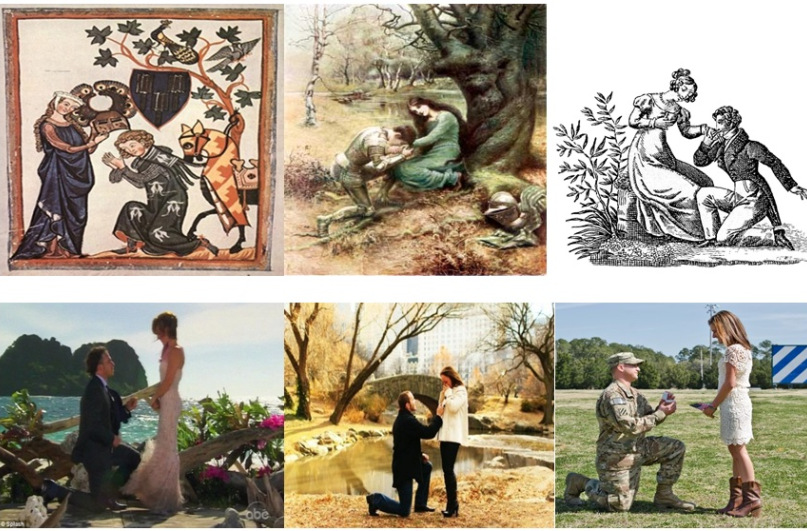
In short it was the lover’s feudal relationship between vassal and overlord which provided the lover with a model for his humble and servile conduct.2
_____
The lead actors – then and now
Imagine twelfth century Europe as a great stage performance enacting the themes of chivalric love, one that would become so popular its actors would continue to serve as role models for the global population 800 years later. The lead actors in this medieval play are as follows, accompanied (in brackets) with the titles we apply to those same actors today as they continue this ancient drama:
Courtly Ladies (= Feminists). Feminists today refer to courtly ladies of the late Middle Ages as the first feminists, or protofeminists, and as with modern feminists these women enjoyed considerable privilege and means. In the 12th – 14th centuries evidence shows that women began to agitate for increased authority over the ‘correct’ way for men and women to conduct relationships, with particular emphasis on what they felt were acceptable roles for males in a dignified and civil society. Not surprisingly this was precisely the time when powerful women were able to establish the female-headed ‘courts of love’ which acted in a comparable way to today’s Family Courts in that both arbitrated love disputes between conflicting couples.
Key literature from the period detailing proper etiquette expected in gender relations was commissioned for writing by powerful women (eg. ‘The Art of Courtly love’) and in some cases was written by women themselves (eg. Christine de Pizan’s writings or those of Marie de France). The emerging discourse acted like a drug that promised the introduction of a one-sided power for females over males, and through the dissemination of romance literature that promise rapidly spread to all social classes in the continent. We have been living with the consequences ever since, a revolution far more significant to the history gender relations than the introduction of the birth control pill and no-fault divorce combined- the latter being mere epiphenomena generated within a larger culture of chivalric love.
The archetypes introduced into society by these high-born ladies are instantly recognizable; the damsel in distress (women as innocent, woman as helpless, women as victim), the princess (women as beautiful, women as narcissistic subject requiring devotion, women as deserving of special privileges), and the high born Ladies (women as morally pure, women as precious, women as superior, women as entitled). These illusions ensured that the attentions of men would be spent attending to women, a program so successful that modern feminists continue to shape today’s cultural landscape with the program of their protofeminists forebears. And just like their forebears, feminists continue to use shaming narratives to facilitate their pedestalizing inheritance.
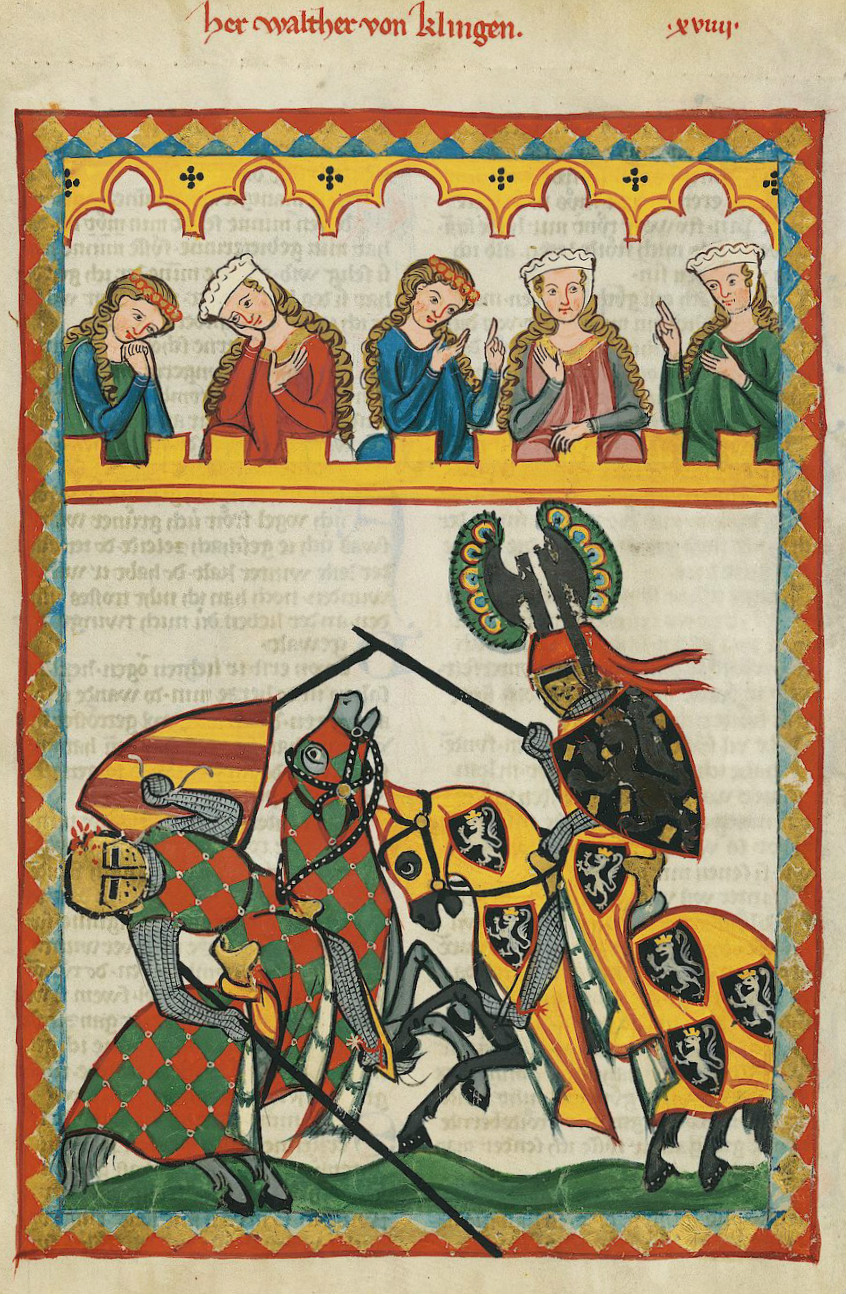 White Knights (= White Knights). We retain this metaphor for such heroic individuals, men who are gallant in so many ways, but mostly the wrong ways such as showing-off to undeserving women and concomitantly delighting in competing with and hurting other men. More than any other player in this play, white knights specialize in gallant behaviour for the purpose of impressing and ultimately getting their egos stroked by women.
White Knights (= White Knights). We retain this metaphor for such heroic individuals, men who are gallant in so many ways, but mostly the wrong ways such as showing-off to undeserving women and concomitantly delighting in competing with and hurting other men. More than any other player in this play, white knights specialize in gallant behaviour for the purpose of impressing and ultimately getting their egos stroked by women.
For these first white knights the tournament, the forerunner to modern sporting tournaments, consisted of chivalrous competitions or fights in the Middle Ages. In these fights knights were only too willing to hurt their fellow men to win the praise of female spectators. The competitors were observed doing battle by women who would throw their garments into the arena where the sportsmen would pick them up and wear pieces of women’s clothes -hence the male wearing a particular woman’s scarf would represent her in the tournament.
The men were basically fighting for “her” then, just as they did elsewhere on real battlefields for wife and mother. The gallant man who won his tournament was granted an opportunity to dally with the woman whom he represented in the ring. We retain this gynocentric tradition today as golf tournaments, football tournaments, martial arts tournaments and so on, all designed to show male prowess where the winning competitors get to dally with the best ladies.
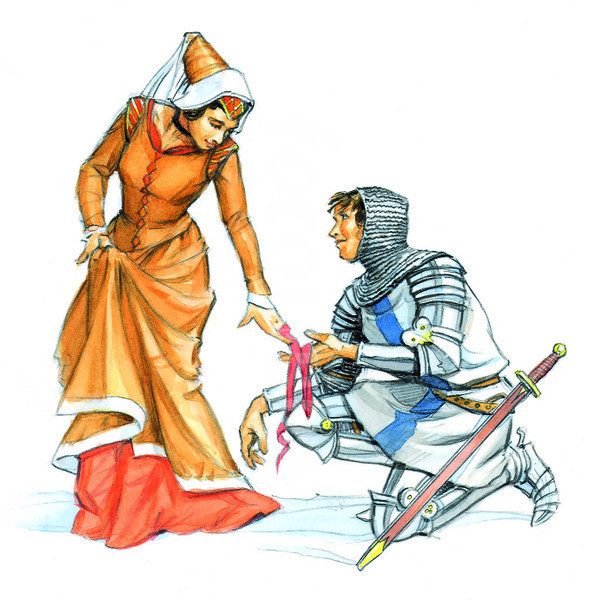 Other activities of white knights include impressing women with big gestures of protection. For example, the ‘Enterprise of the Green Shield with the White Lady’ was a chivalric order founded by Jean Le Maingre and twelve knights in 1399 committing themselves to the protection of women. Inspired by the ideal of courtly love, the stated purpose of the order was to guard and defend the honour, estate, goods, reputation, fame and praise of all ladies and damsels, an undertaking that earned the praise of Christine de Pizan. Le Maingre, tired of receiving complaints from ladies, maidens, and widows claiming to be oppressed by powerful men bent on depriving them of the lands and honours, and finding no knight or squire willing to defend their just cause, founded an order of twelve knights sworn to carry “a shield of gold enamelled with green and a white lady inside”.
Other activities of white knights include impressing women with big gestures of protection. For example, the ‘Enterprise of the Green Shield with the White Lady’ was a chivalric order founded by Jean Le Maingre and twelve knights in 1399 committing themselves to the protection of women. Inspired by the ideal of courtly love, the stated purpose of the order was to guard and defend the honour, estate, goods, reputation, fame and praise of all ladies and damsels, an undertaking that earned the praise of Christine de Pizan. Le Maingre, tired of receiving complaints from ladies, maidens, and widows claiming to be oppressed by powerful men bent on depriving them of the lands and honours, and finding no knight or squire willing to defend their just cause, founded an order of twelve knights sworn to carry “a shield of gold enamelled with green and a white lady inside”.
The twelve knights, after swearing this oath, affirmed a long letter explaining their purpose and disseminated it widely in France and beyond her borders. The letter explained that any lady young or old finding herself the victim of injustice could petition one or more or the knights for redress and that knight would respond promptly and leave whatever other task he was performing to fight the lady’s oppressor personally. The similarities of this Order with contemporary enterprises such as the White Ribbon Campaign in which male “ambassadors” pledge an oath to all of womanhood to never condone, excuse or remain silent about violence against women, and to intervene and take action against any man accused of wrongdoing against a woman. The similarities in these gallant missions make clear that the lineage of white knights has progressed seamlessly into the modern era.
Troubadours I (= PUA and Game promoters). The troubadours’ job was to spread the word about the virtues of chivalric love through music, song, poetry and storytelling. Aristocracy and commoner alike enjoyed hearing tales about bravery, and ladies were swept away with epic love poems as the troubadours practiced the rituals of chivalric love. Just like PUAs or Gamers today who write and speak in praise of pussy, troubadours too were composers and promoters of the ‘arts of love’ aimed at securing sexual fulfilment.
Like those troubadours, Roosh and Roissy (etc.) continue the tradition of prose-writing to illustrate the many ways to flatter women in order to get into their pants. Game is a very apt word for this 800 yr old tradition, with its proscription for rehearsed lines and lack of personal authenticity. It is a scripted game of women-worship aimed at a narrow goal. In essence this Casanova routine amounts to a feigning of chivalric love for the purposes of manipulation, usually to gain sex. When modern women call these men ‘players’ they may be very close to the mark. While Roosh et.al. outwardly claim to reject chivalry, they nevertheless embrace its tenets like consummate thespians.
Troubadours II (= Profeminist Men – sometimes derogatorily named ‘manginas’). Unlike the troubadours mentioned above who advocated for a love aimed at sexual fulfillment, Troubadour II advocated a more idealized love of longing that did not consummate in sexual fulfillment. In essence these men more resembled sycophantic Romeos than horny Casanovas. The guiding concept for them was called “fin’ amors,” which meant pure love. Such men were particularly prevalent in the north of France, whereas in the south we see that troubadours (type I mentioned up above) celebrated a love that was adulterous or carnal in which full sexual encounters were sought.
Another thing that distinguished type II troubadours from the former is authenticity. These men appeared to identify wholly with the role and were not merely players. The desire to serve women as their vassal, or perhaps as their masochistic slave, called upon their innermost character. Think of today’s version being the typical profeminist men who work slavishly to pass on the message of their feminist superiors, much as these troubadours slaved to advocate the narcissistic idiosyncrasies of their Ladies. The vassalage role applies here more than with any other character of the Middle Ages – not as a merely pretentious means-to-an-end routine to gain sex, but rather as a soul-affirming act.
_____
Which brings us to what the MHRM refers to as gynocentrism. It is clear from the foregoing that unless evidence of (broadspread) gynocentric culture can be found prior to the Middle Ages, then gynocentrism is precisely 800 years old. In order to determine if this thesis is valid we need first to define exactly what we mean by “gynocentrism”.
The term gynocentrism has been in circulation since the 1800’s, as far as I can tell, with the general definition being “focused on women; concerned with only women.”6 Adam Kostakis further qualifies gynocentrism as, “male sacrifice for the benefit of women” and “the deference of men to women,” and he concludes; “Gynocentrism, whether it went by the name honor, nobility, chivalry, or feminism, its essence has gone unchanged. It remains a peculiarly male duty to help the women onto the lifeboats, while the men themselves face a certain and icy death.”7
From these definitions we see that gynocentrism could refer to any one female-centered practice in an otherwise androcentric society, or to even a single gynocentric act carried out by one individual. With this broad usage in mind the phrase ‘gynocentric culture’ proves more precise for the purposes of this essay , which phrase I will define here as any culture instituting rules for gender relationships that benefit females at the expense of males across a broad range of measures.
At the base of our current form of gynocentrism lies the practice of enforced male sacrifice for the benefit of women. If we accept this definition we need to look back and ask the accompanying question of whether male sacrifices throughout history were always made for the sake of women, or alternatively for the sake of some other primary goal? For instance, when men went to die in vast numbers in wars, was it for women, or was it rather for Man, King and Country? If the latter we cannot then claim that this was a result of some intentional gynocentric culture, at least not in the way I have defined it here. If the sacrifice isn’t intended for the benefit women, even if women were occasional beneficiaries of male sacrifice, then we are not dealing with gynocentrism.
Male disposability strictly “for the benefit of women” comes in strongly only after the advent of the 12th century gender revolution in Europe – a revolution that delivered us terms like gallantry, chivalry, chivalric love, courtesy, romance and so on. From that period onward gynocentric practices grew exponentially, culminating in the demands of today’s feminism. In sum, gynocentrism was a patchy phenomenon at best before the middle ages, after which it became ubiquitous.
With all this in mind it makes little sense to talk of gynocentric culture starting with the industrial revolution a mere 200 years ago (or 100 or even 30 yrs ago), or of it being two million years old as some would argue. We are not simply fighting two million years of genetic programming; our culturally constructed enemy is much, much simpler to pinpoint and to potentially reverse. The historical evidence is strong. All we need do now is look at the circumstances under which gynocentrism first began to flourish and attempt to reverse those circumstances. Specifically, if gynocentric culture was brought about by the practice of shaming, then that is the enemy to target in order to reverse the entire enterprise. For me that process could begin by rejecting the fake moral purity to which women of the last millennia have pretended and against which the worst examples of men have been measured in order to shame the entire gender.
References
1. Amy Kelly, ‘Eleanor of Aquitaine and Her Courts of Love’ Source: Speculum, Vol. 12, No. 1 (Published by Medieval Academy of America, 1937)
2. Jennifer G. Wollock, Rethinking Chivalry and Courtly Love, (Published by Praeger, 2011)
3. Maurice Valency, In Praise of Love: An Introduction to the Love Poetry of the Renaissance, (Macmillan, 1961)
4. For an excellent article about vassaldom today see Gordon Wadsworth’s ‘The Western Butler and his Manhood’ which indicates an unbroken line between the romantic vassaldom of the Middle Ages and the “butler” role expected of males today. (Published on AVfM, 2013)
5. Amy Kelly, ‘Did Women Have a Renaissance?’ in Women, History, and Theory (Published by UCP Press, 1984)
6. Dictionary.com – Gynocentric
7. Adam Kostakis, Gynocentrism Theory – (Published online, 2011). Although Kostakis assumes gynocentrism has been around throughout recorded history, he singles out the Middle Ages for comment: “There is an enormous amount of continuity between the chivalric class code which arose in the Middle Ages and modern feminism… One could say that they are the same entity, which now exists in a more mature form – certainly, we are not dealing with two separate creatures.”
*This article first published at A Voice for Men on 25 March, 2013.
